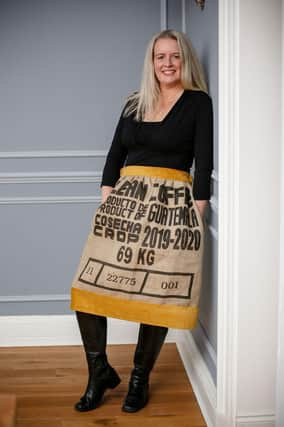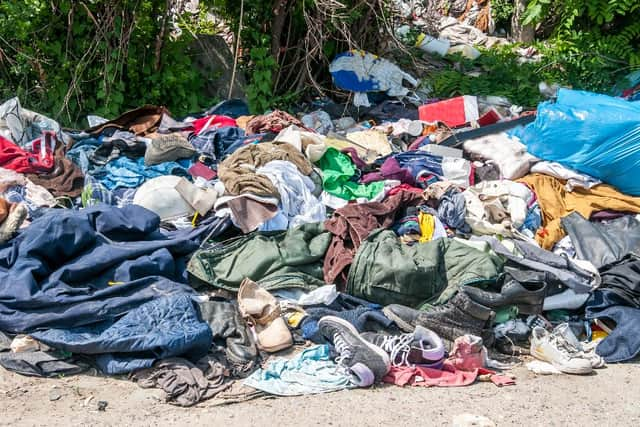Sustainable fashion is very a la mode - Fiona Alexander


The detrimental environmental effects of the fashion industry and the culture of fast fashion are widely acknowledged with more greenhouse gases than aviation and shipping combined, a truckload of textiles landfilled or burned every second, our oceans polluted with plastic microfibres from synthetic clothes and the human cost of poor working conditions.
Sustainability and environmentally friendly fashion has never been so important.
Advertisement
Hide AdAdvertisement
Hide AdGreyfriars and Grace produces sewing patterns with an environmental focus on reusing existing clothes and textiles. This has the environmental benefit of helping to reduce excessive textile manufacture and landfill and the practical benefit of avoiding having to do some of the more difficult elements of sewing such as buttonholes, collars and cuffs.


I launched Greyfriars and Grace in April 2021 and already three of my patterns have been shortlisted for this year’s British Sewing Awards - one for Best Sewing Pattern and two in the category of Best Eco-Friendly Product alongside corporate giants such as Hobbycraft and Gutermann.
It is a bit of a David and Goliath situation but wonderful to receive the industry recognition for sustainability and environmentally friendly design. In October, I started a series of presentations to fashion and textile students in secondary education to discuss how the fashion industry can make positive steps to change and help raise the profile of fashion and textile recycling with the next generation of designers and retail buyers.
There are many things you can do to make your wardrobe more sustainable, such as buying and selling in the second hand market, repairing, choosing more eco-friendly brands and renting clothes, particularly for special occasions.
Online platform ThredUp estimates that the second hand market is one of the fastest growing areas of retail and expected to double to US$77 billion by 2025.
I believe it is possible to change buying habits. Ten years ago, almost no one brought a reusable bag to the supermarket. Now, most people do.
Nowadays, thankfully, hardly anyone would wear real fur for fashion. Once it was the symbol of opulence, glamour and wealth but now it represents cruelty and inhumanity.
I believe it is possible for environmental priorities to impact fashion choices and textile manufacture in the same way that animal rights have almost abolished the use of real fur in the fashion industry and animal testing in the cosmetics industry.
Advertisement
Hide AdAdvertisement
Hide AdIn April 2021, H&M announced its goal of only using recycled or other sustainably sourced materials by 2030. Last year ASOS launched its first circular collection and Zara wants 80 per cent of the energy consumed in its headquarters, factories and stores to be from renewable sources and its facilities to produce zero landfill waste by 2025.
I am just a small piece of the jigsaw, but I do hope Greyfriars and Grace can help make a contribution to combat the detrimental environmental effects of the culture of fast fashion and, at the same time, create some happiness and assist people who enjoy sewing to create beautiful, individual and quality clothing, made with love.
Fiona Alexander, Founder and designer, Greyfriars and Grace
Comments
Want to join the conversation? Please or to comment on this article.